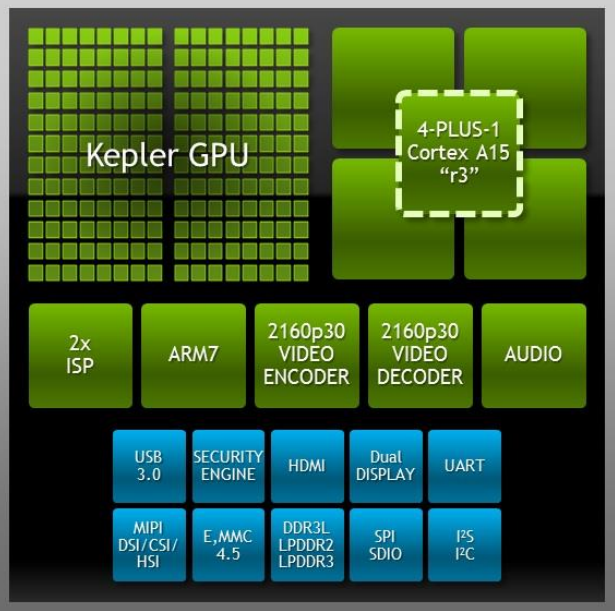Historically, GPU architectures have run small tasks on multiple GPU cores in parallel. This was in contrast to CPUs that operate a large task on a single powerful CPU core. Since then, GPUs have come a long way to speed up processing capabilities for Device, PC and Server Platforms.
Take an example of using a GPU for powerful server stations. Earlier, it was not feasible to use similar architecture for the embedded platform due to form, fit and power requisites of the design. Now, we see the NVIDIA Tegra K1 (192 GPU cores) leverage the Kepler GPU architecture, and deliver performance specifications equivalent to High Performance Computing (HPC) systems.

Figure 1 NVIDIA Tegra K1 Mobile Processor comes in two variants – one with Quad core 32 bit ARM A15, and the second one with dual core 64 bit ARM v8 architecture.
This architecture eliminates the need of high performance DSPs and replaces it with multicore GPUs.
Another myth of using GPU on designs was that it needs high power and a standalone host processor. The Tegra K1 busts this myth with the sub-10W SoC with on-board Quad core ARM cortex A15 processors that are more powerful than standard host processors. This GPU architecture is capable of over 300 GFLOPS of 32-bit floating point computations. Tegra K1 is power efficient and delivers almost fifty percent higher performance per watt compared to competing mobile processors.
But the most encouraging benefit is the ability to port computational intensive and graphical applications.
This is easily done thanks to Tegra K1’s support of CUDA Parallel Programming and desktop graphics APIs. The power of GPU and ARM core makes it natural for mobile computing as well. The applications are many from consumer domain for Tablets, smartphones, virtual gaming, augmented reality; to automotive for navigation, ADAS, infotainment; and for surveillance video analytics, object / face recognition, motion tracking and the new UAV drones!
NVDIA provides the complete development environment with latest version of UBUNTU ported on Tegra K1 board. This makes it easy for new adopters of NVIDIA mobile platform. Refer to the web page for all the development needs on Tegra K1 board
I must say that Tegra K1 processor is world’s first supercomputer in mobile space with power of GPU and Host processor built into a single chip. The development tools and support provided by NVIDIA developer forum makes it much easier choice for any new mobile embedded development.
eInfochips is a Specialty OEM Partner and also a CUDA training partner with NVIDIA. The company has a team of trained CUDA programmers to complement their electronic design services with system software development and QA services.












